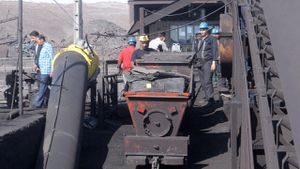A supernova—one of the universe's most extraordinary phenomena—occurs when a star reaches the end of its life and explodes in a brilliant burst of light. These stellar explosions can briefly outshine entire galaxies, radiating more energy than our sun will in its entire lifetime. According to NASA, supernovas are “the largest explosions that take place in space.” They are not only spectacular to observe but are also key players in cosmic evolution. Supernovas produce and disseminate heavy elements essential for planet formation and life, like oxygen, iron, and calcium.
A recent supernova that has captivated both professional and amateur astronomers is SN 2023ixf. Spotted on May 19, 2023, by supernova hunter Koichi Itagaki in the Pinwheel Galaxy, SN 2023ixf was confirmed the following day by the Zwicky Transient Facility (ZTF) in California. This discovery has once again highlighted the importance of supernovas in our quest to understand the universe’s origins and its ongoing evolution.
Interestingly, various civilizations recorded supernovas long before the invention of telescopes in the 17th century. For instance, Chinese astronomers documented the oldest recorded supernova, RCW 86, in AD 185. Another famous one is the Crab Nebula, observed in 1054 by Chinese, Korean, and possibly Native American astronomers. The observations and historical records of these events have provided invaluable insights into both ancient and modern astronomy.
But what exactly causes a supernova? Broadly speaking, there are two main types: thermonuclear runaway and core-collapse. Thermonuclear runaway, typically called Type Ia supernova, occurs in binary star systems where at least one star is a white dwarf. When the white dwarf accretes too much matter, surpassing a critical mass (approximately 1.44 times the mass of our sun), it triggers a runaway nuclear fusion and subsequently explodes. On the other hand, core-collapse supernovas occur when massive stars, with more than eight times the mass of our sun, exhaust their nuclear fuel and collapse under their gravity. These stars' cores heat up and eventually explode, producing a brilliant light show.
After a supernova explosion, several outcomes are possible. The exploded star might partially collapse into a black hole or a neutron star, and the remaining mass is either converted into energy or cast off into space. This shed material forms what is known as a supernova remnant, a type of nebula rich in heavy elements. Sometimes, these remnants can also generate phenomena like long gamma-ray bursts, which are emissions of light at very high gamma-ray energies.
Another question often posed is why supernovas are so important. For one, they play a crucial role in the cosmic cycle of matter and energy. According to research by the European Space Agency, a supernova will occur once every 50 years in a galaxy the size of the Milky Way, which means a star explodes somewhere in the universe every 10 seconds or so. The ‘Local Bubble,’ a 300-light-year-long bubble of gas surrounding our solar system, was formed about 10 million years ago by a series of supernovae explosions. These explosions not only disperse essential elements throughout the interstellar medium but also trigger the birth of new stars by compressing clouds of gas.
Understanding the mechanics of supernovas involves comprehending what happens at their very core. In a Type Ia supernova, the explosion often occurs because the white dwarf accretes too much mass, leading to a thermonuclear runaway. The exact mechanisms of this runaway process remain an active area of research. In core-collapse supernovas, the onset of fusion creating elements heavier than iron absorbs energy rather than producing it, leading the star to collapse in on itself. When the core hits critical density, nuclear forces overpower gravity, violently expelling matter outward.
Equally fascinating are the remnants left behind. Astronomers have used telescopes like the Hubble Space Telescope and the James Webb Space Telescope to capture stunning images and spectra of supernova remnants. For instance, the Crab Nebula, the remnant of a supernova observed in 1054, continues to be a subject of intense study and fascination. These remnants provide vital clues about the elements produced in these cosmic explosions and offer a snapshot of the universe’s life cycle.
Despite their magnificence, supernovas have their limitations. The unpredictable nature of these explosions and their rarity in any given galaxy make them challenging to study. Moreover, some supernovas can occur in regions with high interstellar dust, making observations difficult. Future research aims to overcome these limitations through more advanced telescopes and networks like the Supernova Early Warning System (SNEWS), which uses neutrino detectors to give an early alert of a potential supernova in our galaxy.
The future of supernova research is bright. Scientists are constantly enhancing their tools and methods to study these stellar explosions. For instance, the JWST’s JWST Advanced Deep Extragalactic Survey (JADES) program has already identified around 80 new supernovas, offering fresh data for astronomers to explore. This continuous stream of discoveries promises not only to enhance our understanding of stellar life cycles but also to shed light on fundamental questions about the universe, such as the nature of dark energy and the formation of elements.
In summary, supernovas are not just stunning celestial events but also critical to our understanding of the universe. From the ancient records of RCW 86 and the Crab Nebula to modern-day observations of SN 2023ixf, these stellar explosions have fascinated humans for centuries. As we continue to develop our astronomical tools and techniques, the mysteries of supernovas will slowly unravel, offering deeper insights into the cosmos and our place in it.



